What Went Wrong With the 2011 Green Lantern Movie?
In 2011 Warner Bros tried to launch the DC Extended Universe with a Green Lantern movie. It didn't work out.
There has been a lot of progress in the last eight years of superhero cinema. In the summer of 2011, the Avengers had not yet assembled, Christian Bale was still the Dark Knight, and Ryan Reynolds was still trying to get a Deadpool movie made out of the ashes of that awful Wolverine prequel.
But there were plenty of signs as to where this was all going down the road and in that last pre-Avengers summer blockbuster season, when Warner Bros Pictures delivered the first Green Lantern movie. Just as Marvel Studios brought Iron Man out of a second-tier character from the comics with the intentions of branching out into a broader cinematic continuity and crossovers with other characters down the line, so Green Lantern would launch a franchise for the DC Comics characters.
In the film, test pilot Hal Jordan (Ryan Reynolds) is chosen by a dying alien named Abin Sur (Temuera Morrison) to become the new guardian of the solar system, complete with a power ring and lantern battery through which he can harness willpower to create constructs and fight evil. Despite skepticism from veteran Lantern Sinestro (Mark Strong) and his old flame Carol Ferris (Blake Lively), Hal must overcome his own fear in order to confront Hector Hammond, (Peter Sarsgaard) a telekinetic scientist who has been corrupted by Parallax, a fear-based abomination from the Green Lanterns’ past.
Warner Bros. had been trying to get the Green Lantern movie going for a long time, having previously offered the property to the likes of Kevin Smith and Quentin Tarantino in the 1990s. When it finally made it to the screen, they ended up converting the richly textured sci-fi cop story of the comics into a smug and ironic superhero origin movie. It was edited to the point of inscrutability and it still boasts some of the worst CGI ever seen in a mainstream studio movie.
So, what went wrong?
This isn’t going to be a comparison of the film to the comics – with a couple of key exceptions, this is about how the film does or doesn’t work on its own. This is the story of how the masterminds behind what would become DC’s extended universe on television, the director of GoldenEye and Casino Royale, and the top minds at Warner Bros all clashed into one another in the process of trying to bring the Green Lanterns to the big screen.
With all of that out of the way, so let’s get these pants off and fly some planes. I mean, er, let’s look at what went wrong.
Exposition
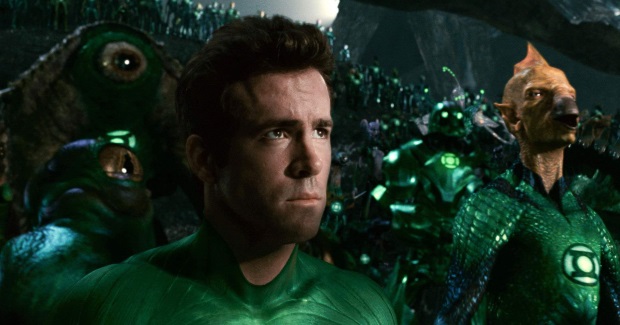
The opening of Green Lantern might just constitute a trend in movies about magic rings, for having Australian actors deliver exposition right at the top. But in contrast to Cate Blanchett’s introduction to Middle Earth from The Fellowship Of The Ring, Geoffrey Rush’s Tomar-Re gets this movie off to exactly the wrong start.
See, the universe is divided into 3600 sectors, policed by chosen representatives who utilize the green power of will, drawn from everyone alive, to fight against the yellow impurity that represents fear, and so on and so forth. It breaks the “show, don’t tell” rule right at the very beginning, but then, worse still, reiterates all of this information to Hal, our natural audience viewpoint character, later on in the plot.
Paradoxically, the movie’s problem with exposition isn’t just that there’s too much of it. In fact, overwhelmingly, there’s actually not enough of it, with the result that we learn one or two crucial details just seconds before they’re actually important to the story.
An especially clumsy instance of this comes early on, when Hal is in the cockpit of his F-16 jet. Stalled and falling to Earth, he catches sight of a Polaroid of his father and has a PTSD flashback to his father’s traumatic death at the controls of an experimental aircraft. This is all the set-up that the theatrical cut of the film gives us for a daddy issues arc involving a father that we never meet properly, but they keep right on referring back to Martin Jordan.
Aside from Hal’s jumbled family life (didn’t he have a nephew at one point in this movie?), there’s the villainous Hector Hammond, whose story literally runs parallel to Hal’s. He’s introduced as Hal first swears the Green Lantern oath and the film goes on to inter-cut scenes in their respective arcs from there on out, including their respective superpowered origins. However, they don’t actually interact with each other until a party scene at the midpoint of the film… where it turns out they’ve known each other since childhood.
read more: The Justice League Movie You Never Saw
It’s already hard to swallow that 39-year-old Sarsgaard was in school with Reynolds (aged 34) and Lively (aged 23!) without it being dumped on us this late in the story, when Hector has otherwise been kept separate up to this point. It’s a messy effort that serves to rein in characters and only winds up making the universe smaller. It’s one of those comic book movies where hardly any of the characters are more than one Facebook friend removed from anybody else, which is odd for a space opera of the intended scale.
In fairness, the Blu-ray extended cut restores the early scenes of Hal, Carol, and Hector as children and Martin’s fateful accident, making a little more sense of this clumsy exposition. This is the full extent of the extension, so it hardly redeems the movie overall, but it turns out the difference between predictability and incomprehensibility often comes down to a little studio interference.
Speaking of which…
Studio interference
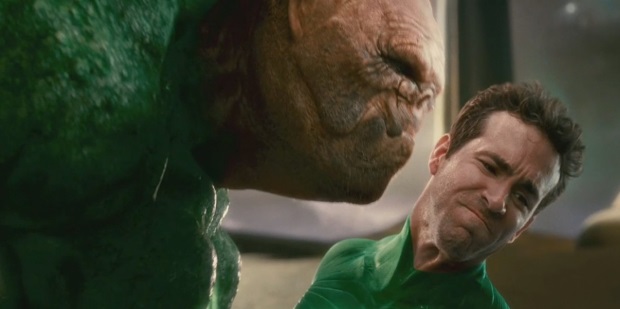
While Marvel Studios pretty much has the run of their own cinematic universe as far as the studio bods at Disney are concerned, Green Lantern followed in a long line of DC Comics movies at Warner Bros that were largely overseen by the studio’s executives. Joel Schumacher’s Batman movies, Catwoman, and Jonah Hex all smack of ham-handed meddling by producers who don’t understand the material, but you rarely see a film with so many hands on it ending up as paint-by-numbers as this one.
In summer 2008, The Dark Knight became a box office phenomenon and Warner Bros. started looking in earnest to see how they could bring more DC properties to the screen. Greg Berlanti co-wrote a script with Michael Green and Marc Guggenheim and Warner assigned Berlanti to direct it, with the same team on standby to make a film version of The Flash set in the same continuity, if Green Lantern was a success.
However, Berlanti was reassigned to the studio’s This Is Where I Leave You and in February 2009, Martin Campbell replaced him in the director’s seat. Having previously reinvented Zorro and James Bond (twice), Campbell’s appointment was not necessarily a bad omen, but in retrospect, it seems like the first misstep to take someone who knew the material off the project in favor of a reliable hand who hadn’t directed a CG-heavy feature like this before.
Additionally, Michael Goldenberg was brought in to rewrite the script by Berlanti, Green, and Guggenheim – having previously wrangled the most unwieldy Harry Potter tome The Order Of The Phoenix into one of the zippiest scripts of that franchise, it also seems like the writer was brought in to rein things in. The original draft is online if you know where to look for it and all of the changes for the final film seem designed to make it more of a generic superhero origin story, when the potential is there for a space opera cop movie.
It might be puzzling to wonder why the studio wanted to retain creative control after reaping the rewards of Christopher Nolan’s take on Batman. The answer probably lies in 2006’s Superman Returns, Bryan Singer’s loving follow-up to Superman and Superman II, which underperformed at the global box office and got lukewarm reviews on arrival.
Perhaps out of a desire to play it safe, it was a different story behind the scenes on Green Lantern. Apparently, Campbell’s first and only choice for the lead role was Bradley Cooper, but the studio courted Reynolds for the role instead, leading to reported clashes between the director and the star on set. Insider reports about heavy-duty reshoots in January 2011, a last minute 3D conversion and the studio taking the final cut away from Campbell continued in the run-up to its release.
Everyone from DC’s Geoff Johns to Warner executive Jeff Robinov got involved in the fraught editing process and frankly, the results speak for themselves. Huge chunks of the film don’t make a whole bunch of sense while you’re watching it, most criminally of all in the mid-credits stinger, in which Sinestro, who has just given a speech about how his faith in the Green Lanterns as a force to fight fear, puts on the yellow fear ring out of nowhere and gives an ominous little sigh, to set him up as a villain in the sequel. That’s what Sinestro does in the comics, of course, but like so many other decisions here, it doesn’t ring true for the characters in the film adaptation.
read more: The Wonder Woman Movie You Never Saw
“The ring’s limits are only what you can imagine,” Tomar-Re intones, but the studio meddling gave us a film with no shortage of ideas, but a severe lack of imagination in the execution. How else does the film’s big setpiece involve Hal conjuring up a giant race track in order to give the film a merchanding tie-in with Hot Wheels?
Green and animated
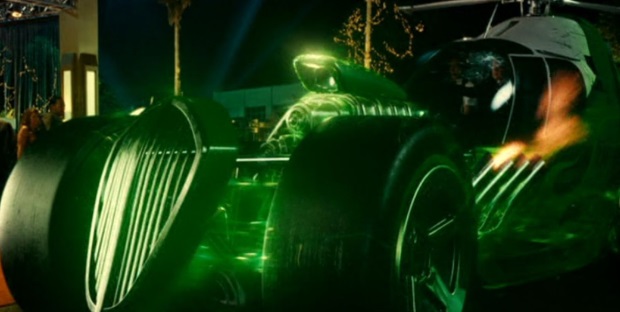
The ring constructs lack definition, but the emerald animation of race tracks, giant fists, and heavy artillery actually winds up being the most believable effect in the movie. They look fine because they don’t need definition like other computer generated creations and that’s where the movie truly becomes one of the worst-looking $200 million films ever made.
For starters, as referenced in Deadpool, the Lanterns’ uniforms are green and animated, rather than actual costumes, a creative decision that has mixed results in practice. On Hal, the luminescent second skin doesn’t look too bad, recalling a better version of the kind of costume designs that WB were after in Tim Burton’s Superman Lives in the 1990s, but it only looks right without the cartoonish CG mask that sporadically appears on him when he needs to hide his secret identity.
As for the other, non-human Lanterns, the CG is universally terrible. Posters for the film teased the extraordinary array of species that would feature in the film, but the effects seem to have limited what was possible. A lot of the non-speaking characters in the movie look like concept art on the poster and they don’t look much better when we see them in motion.
A bad stereoscopic conversion could explain how every scene set on the Lanterns’ planet Oa looks swampy and light-deprived, but it truly looks as awful in 2D as in 3D. The underpowered prologue seems designed for 3D, which is the clearest sign that it was a last minute addition by the studio, but again, the effects can’t back it up. The nearest comparison would be to the overly digital look of the Star Wars prequels, but dimmer and less focused – it really takes the majesty out of it.
We haven’t even got to Parallax, a stunningly misjudged creation, from design to execution. This giant yellow cloud represents a villain whose name couldn’t be more reminiscent of a laxative and seems to have unwisely taken a cue from the derided portrayal of Galactus at the end of 2007’s Fantastic Four: Rise Of The Silver Surfer. Even with the ominous vocals of Clancy Brown, who has voiced Lex Luthor in various animated DC adaptations, the threat is utterly risible from its very first appearance and it doesn’t get any easier to take it seriously from there.
The film’s harried schedule seems to have been its downfall in the VFX department. The meddling led to a run-on post-production schedule. Voice actors Rush and Michael Clarke Duncan were cast very late in the day, just months before the film’s release – even though Tomar-Re and Kilowog weren’t performance capture characters, that had to affect the alignment of actor and animation. The studio also had to tack an additional $9 million onto the effects budget two months before release, which mostly seems to have gone on getting it finished in time rather than sprucing it up to a decent standard.
read more: The JJ Abrams Superman Movie You Never Saw
Bad effects are all relative, but the fundamentally bad consequence of this really affects the other Green Lanterns within the story. Before the climax of the movie, Hal goes all the way to Oa to appeal for help from the Corps, but winds up fighting Parallax alone, probably because it wouldn’t have been possible to finish the film on time with a bunch of CG characters to animate, on top of the villain and the hero’s super-duds. Sinestro and a few others show up after the fight is done, but having set them up as great warriors all the way through, this feels utterly wrong-footed.
You could generously say that the reach exceeds the film’s grasp, but once again, this film cost $200 million. With that amount of money, it’s only an endless run of bad creative decisions that leads you to a massive intergalactic corps of endlessly unique aliens that isn’t even as cool or as interesting as Scott Pilgrim‘s Vegan Police. Collectively, they’re only a little more interesting than our hero.
Adventure goes to voicemail
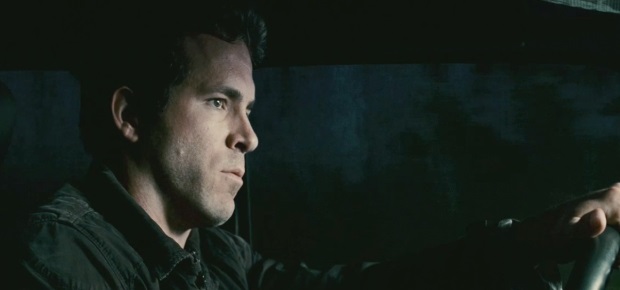
But herein lies the biggest problem with the film – Hal Jordan is a complete asshole from beginning to end and it comes not from his Tony Stark-brand cockiness or bravado, but from his status as superhero cinema’s first inaction hero.
At some point in the first act, the call to adventure or responsibility will be directed at our hero and they’ll let it go to voicemail, until something shakes them out of their indifference. Even if you’ve never touched Save the Cat or similar screenwriting guides, you know this bit – Luke Skywalker can’t go to Alderaan because he’s late getting home; Sarah Connor can’t believe that she gives birth to the savior of the future; Peter Parker lets a mugger go when he could easily have stopped him.
These beats always take place early in a story and are quickly followed by a change of heart, often spurred by a tragic point of no return. Thanks to Green Lantern, you don’t have to imagine how annoying it would be if a hero spent most of the story refusing the call. The man who is chosen above all others on Earth to fearlessly defend our part of the galaxy spends most of the movie being passively ferried from one incident to the next by his magic ring, receiving pep talks from friends and family who really ought to be done with him by this point, and has quit his duty by the midpoint of the movie.
Yep, you read that right. Our hero quits before he even has to do anything. He still gets to keep the ring – the original draft had Sinestro gravely explain that it is bound to him until he dies “in battle or elsewhere,” but this is glossed over in the movie. Hal’s arc in the movie is not about learning to be fearless, but learning to overcome fear, which would be fine if we saw him affected by fear in action rather than being crippled by fear of any number of things, from memories of his father, to commitment to Carol, to a friendly training beatdown by Kilowog and Sinestro.
read more: Why Tim Burton’s Batman 3 Never Happened
The script seems to define acts as divisions of the story, rather than actual decisive moves on Hal’s part. Only when he makes an appearance to save people at the Ferris Air party does Hal actually check his 37 missed calls to adventure and makes an active decision to do something. Up until then, he make decidedly unheroic choices, like destroying millions of dollars worth of aircraft to prove a point that hobbles his own employers and, of course, quitting being a Green Lantern.
It doesn’t help that Reynolds is misdirected, leaning in favor of smug irony (Bradley Cooper probably would have eaten this shit up and grinned while he did it) rather than earnestness or valor or any of the usual qualities you want from a space cop-slash-superhero.
Reynolds is charismatic and likeable as hell, and he tries his damnedest here, but compared to the brilliant on-the-spot performance of the Green Lantern oath he gave to a young fan at Comic Con in 2010 (which won Reynolds the goodwill of all who live), his Hal is as mirthless and charmless as the script allows.
In an interview about Deadpool, Reynolds told Yahoo! Movies: “When we shot Green Lantern, nobody auditioning for the role of Green Lantern was given the opportunity to read the script, because the script didn’t exist. I’m not complaining about it – it was an opportunity of a lifetime, and if I were to go back and retrace my steps, I would probably do everything the exact same way.”
He also said “I’ve since learned that a lot of superhero movies don’t really have a fully functioning draft of the screenplay ready until they’re already well into shooting.”
It couldn’t have hurt in this case though, could it?
What went right?
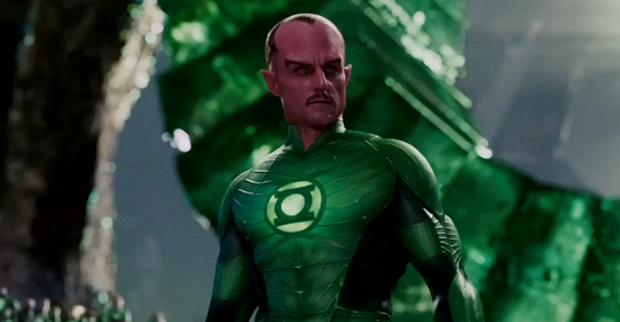
It’s hard to find nice things to say about this movie, but it’s not all irretrievably bad.
Though wasted, Mark Strong’s Sinestro is up there with JK Simmons’ J. Jonah Jameson as an interpretation of the character that most fans would agree deserved another run in the next version of the property. In a movie mired by shoddy CG characters, he makes his sunburnt David Niven look completely credible and the merest hint of what might have been if Sinestro had been given his due as Hal’s mentor-turned-nemesis does wonders for its watchability.
read more: Complete Schedule of Upcoming DC Superhero DCEU Movies
Other than Strong, Peter Sarsgaard is by far the most entertainingly invested cast member, turning his hammy Hector Hammond up to eleventy-stupid with ridiculous wails and Malkovichian intensity. He gets a good shake before the poo monster shows up, but so many of the other supporting characters are wasted, including Angela Bassett’s Amanda Waller, presumably serving Nick Fury duty for the intended DC franchise, and Tim Robbins’ Senator Hammond.
Plus, even though it’s a gag that further breaks the film, we have a soft spot for Blake Lively’s ad lib when Hal goes through the motions of the “Superman visits Lois Lane” scene and she immediately recognizes him. “I’ve seen you naked,” she tells him incredulously, “I’ve known you my whole life! You don’t think I would recognize you because I can’t see your cheekbones?” It takes away the need for the lousy mask altogether, but outside of keeping the hero on the bench for an hour and change, that’s the closest the film ever gets to subverting conventions.
Aftermath
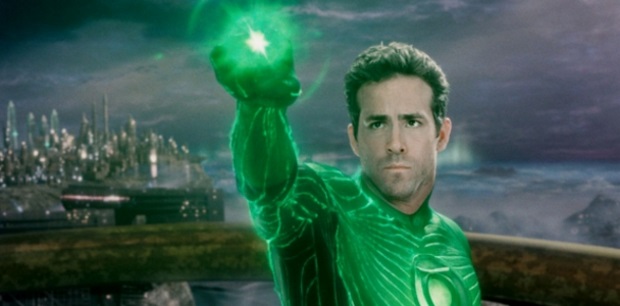
Michael Goldenberg was assigned to write Green Lantern 2 a whole year before the first film hit cinemas, but the studio’s confidence in the film turned out to be misplaced. In just about every way that Iron Man went right, Green Lantern went wrong and the result was critically panned. Audiences steered clear too, and the eventual worldwide box office take of $219 million wasn’t enough for Warner Bros to push ahead with the planned sequels.
The following year, Christopher Nolan released the final chapter in his Dark Knight trilogy before moving on to produce Man of Steel, Zack Snyder’s Superman film, which has become the new foundation stone for a DC cinematic universe. Amanda Waller returned to the big screen, this time played by Viola Davis, as one of the main movers and shakers in Suicide Squad, and we’re set to see a reboot titled Green Lantern Corps. According to JoBlo, they’re looking at making the film a ”Lethal Weapon in space” with Hal Jordan and John Stewart, another Lantern from Earth, which would be a bit more in line with the cop movie approach that would arguably have benefited this one. We did least catch a brief glimpse of an obscure member of the Green Lantern Corps in the Justice League movie in 2017.
Is 2011’s Green Lantern the worst DC movie? No, because it’s not as bad as Catwomanor Jonah Hex and it would take something truly abysmal to set a new nadir for these movies. But despite hewing to instructions from the Ladybird Book of Making Superhero Movies at every possible point, it still turned out to be an absolute mess, full of lousy dialogue, lousier CGI, and squandered potential. Green Lantern Corps will likely be a very different proposition and by that point, you can probably let this one escape your sight.